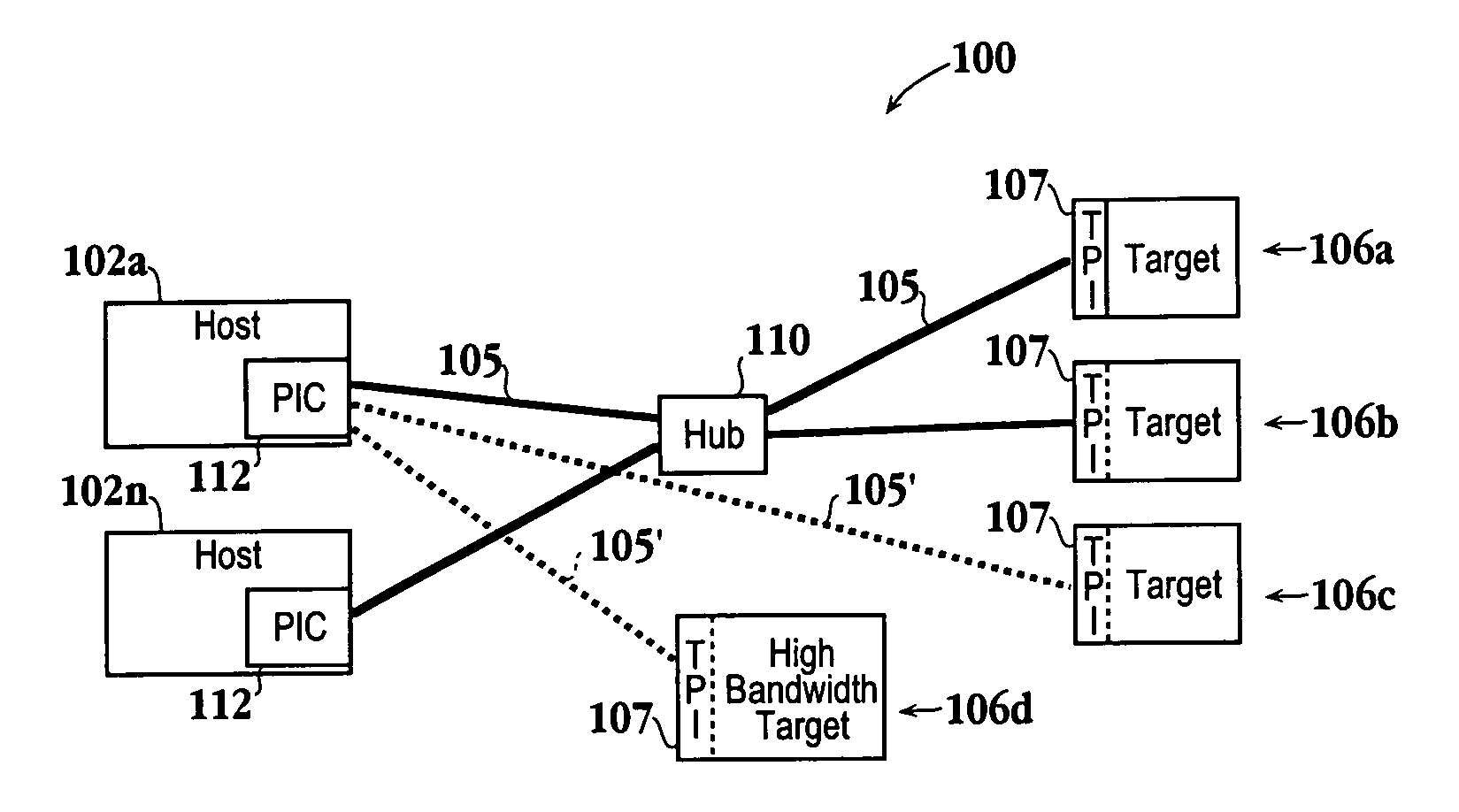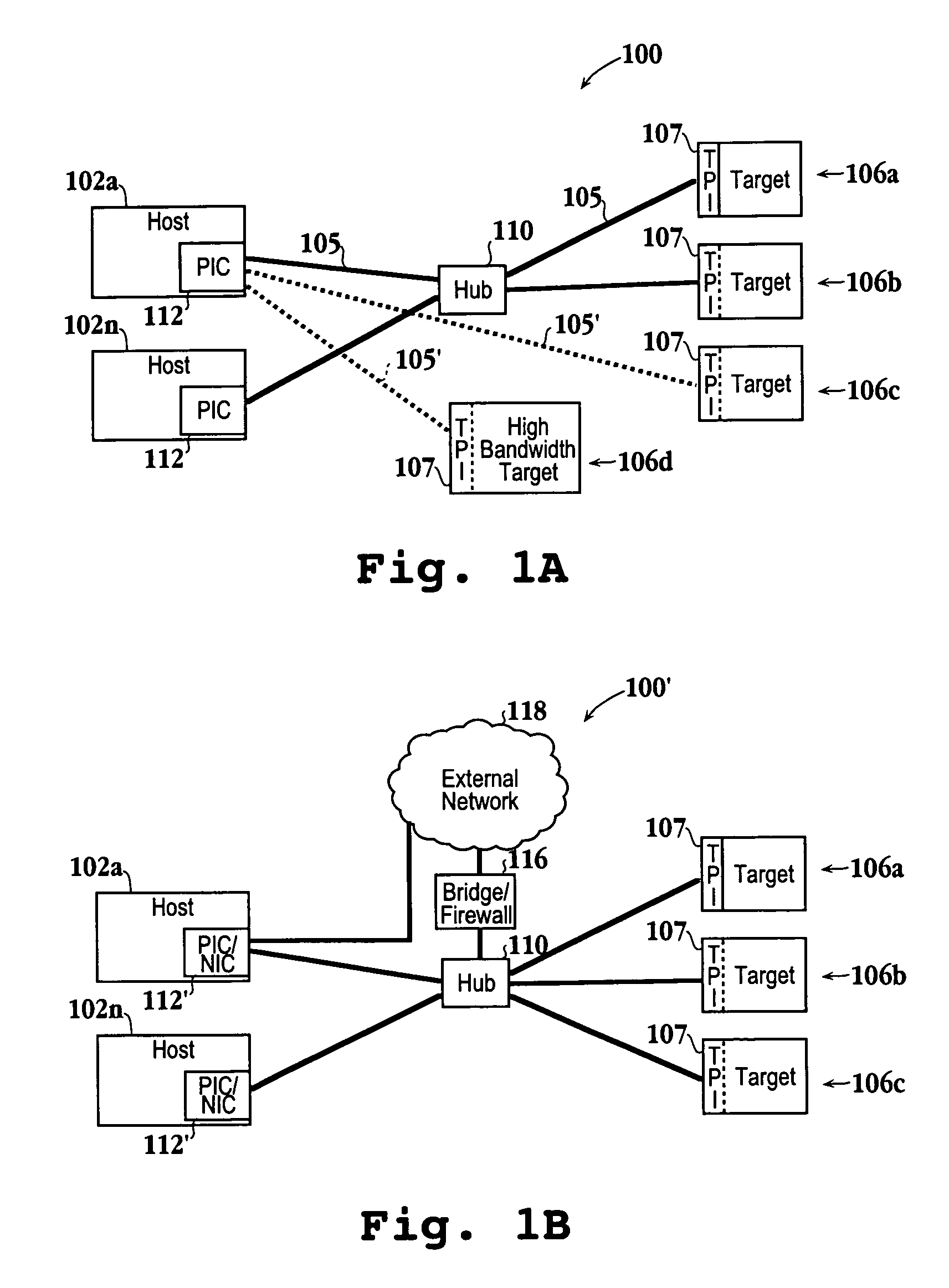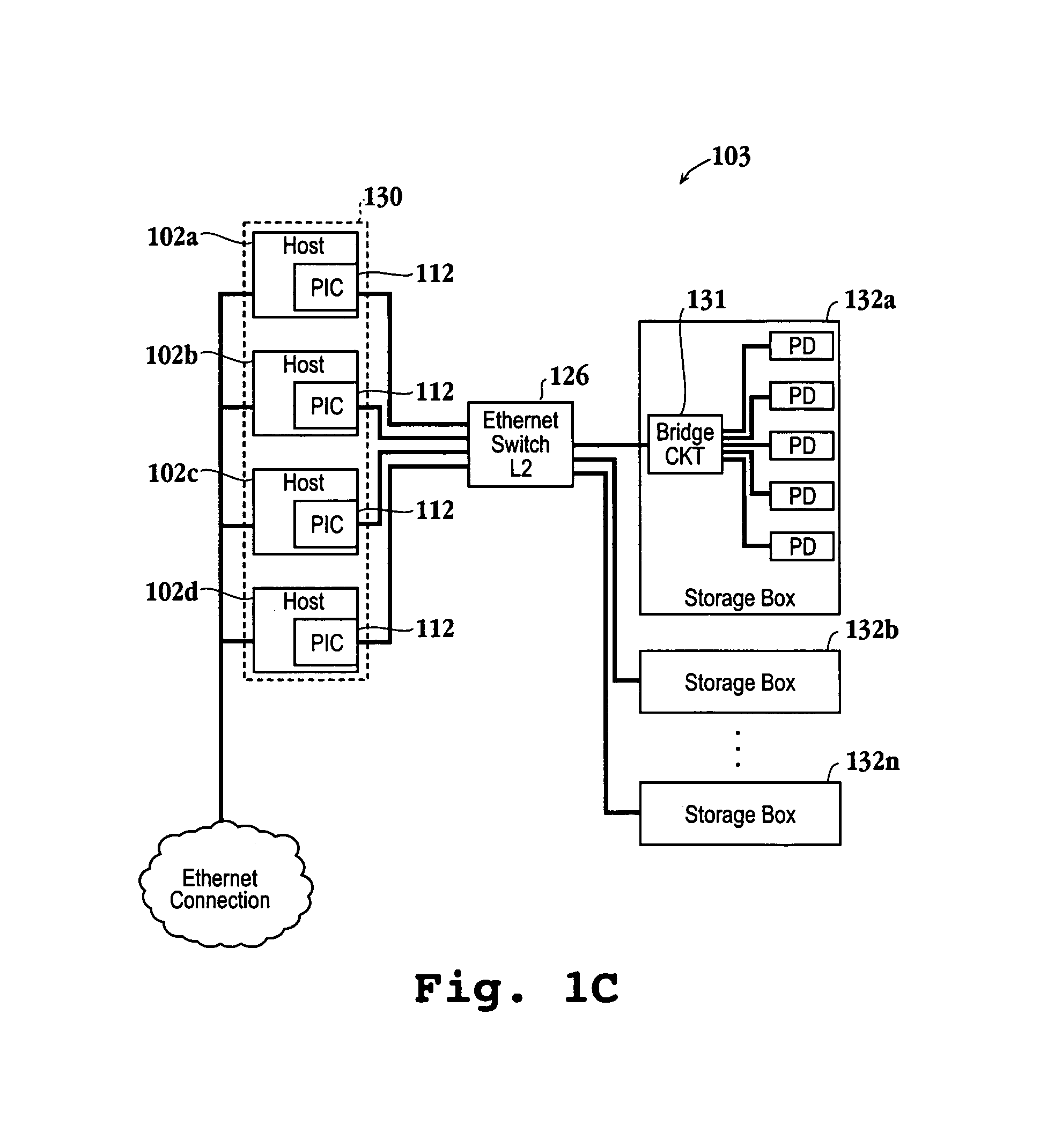Methods for implementing an ethernet storage protocol in computer networks
a technology of computer networks and storage protocols, applied in the field of communication protocols, can solve the problems of large overhead and inefficient storage data transfer in a local area network environmen
- Summary
- Abstract
- Description
- Claims
- Application Information
AI Technical Summary
Benefits of technology
Problems solved by technology
Method used
Image
Examples
Embodiment Construction
[0048]An invention is described for a system for efficient data transfers in a network environment. Preferably, the network environment will be modified to work in accordance with an Ethernet Storage Protocol (ESP). An ESP network will preferably include host computers equipped with hardware to enable communication using a lightweight transport protocol, such as a simple transport protocol (STP) of the present invention. The STP is configured to eliminate the overhead and inefficiencies associated with prior art transport protocols, such as TCP. In one embodiment, the STP of the present invention will enable more efficient transfers of data over a communication link, such as a local area network (LAN). Communication can also occur over a larger network, such as the Internet with the additional implementation of the Internet Protocol (IP). Consequently, STP can either run on its own in a local environment or over IP. In a wide area network, it may also be beneficial to run STP over I...
PUM
 Login to View More
Login to View More Abstract
Description
Claims
Application Information
 Login to View More
Login to View More - R&D
- Intellectual Property
- Life Sciences
- Materials
- Tech Scout
- Unparalleled Data Quality
- Higher Quality Content
- 60% Fewer Hallucinations
Browse by: Latest US Patents, China's latest patents, Technical Efficacy Thesaurus, Application Domain, Technology Topic, Popular Technical Reports.
© 2025 PatSnap. All rights reserved.Legal|Privacy policy|Modern Slavery Act Transparency Statement|Sitemap|About US| Contact US: help@patsnap.com



